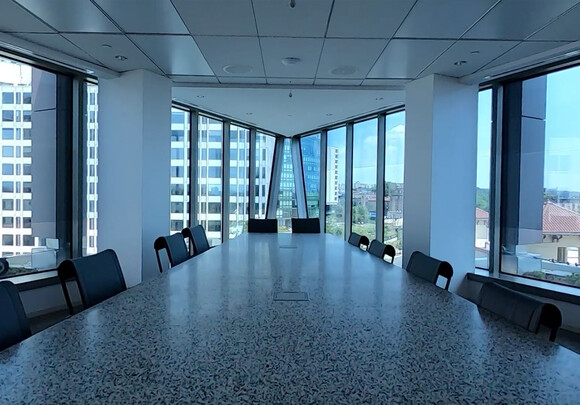American Geophysical Union
The Challenge
In 2013, the American Geophysical Union (AGU), a leading international nonprofit scientific association, was faced with a challenge – its 62,000 square-foot Washington, DC headquarters building and infrastructure was aging. As AGU prepared to celebrate the centennial year of its founding, the organization embarked on a journey to renovate its headquarters to become DC’s first commercial renovation to achieve net zero energy status – producing as much energy as it consumes over a year –and a living representation of its mission: science for the benefit of humanity.
The Solution
At the onset of its renovation, AGU established several goals for the project, including developing a workspace that fosters a healthy work environment with an emphasis on wellbeing for employees and tenants, and serving as an example for other buildings around the world striving to achieve net zero energy status.
AGU accomplished these goals by integrating leading technologies into the building, including 11,227 ft2 of SageGlass LightZone® in over 900 windows. LightZone® provides tenants with the ability to create up to three tint zones within a single pane of glass to provide glare control and daylight management. SageGlass also provided an elegant architectural solution to “The Prow,” the uniquely-shaped corner of the building that would be otherwise difficult to shade with traditional solutions.
“When AGU embarked on this journey to renovate their building to net zero energy, they wanted to create a replicable model for other existing building owners to follow,” said Guil Almeida, Project Designer, Senior Associate, Hickok Cole Architects. “Incorporating leading edge technologies like Sage was important to AGU so that other people can come and have an example to study for years and years to come.”
Other features working alongside SageGlass to support AGU’s ambitious goals include a solar photovoltaic array; radiant cooling; a dedicated outdoor air system, water reclamation cistern, and municipal sewer heat exchange systems; a direct current electrified power grid; and a hydroponic phytoremediation wall system or “green wall” featuring over 400 plants.
AGU is collecting data on every system in the building to make available to the public so they can see the impact that these strategies are having on energy usage, and ultimately the climate and the planet.
The Benefits
SageGlass played an integral role in helping AGU reach its sustainability goals, specifically through energy use. Incorporation of smart glass in the space limits the use of the building’s heating and cooling system, resulting in a peak load reduction of 35 percent. In fact, AGU was able to utilize chilled beams for all of their space cooling needs. The smart glass is connected to the interior lights through the building management system, so as the windows tint darker in response to the sun, the lights shine brighter, and vice versa, resulting in 5 percent electrical lighting savings. These features reduce the building’s overall energy consumption, supporting its net zero energy status.
“SageGlass is showing that you can have a lot of window and still be able to reduce the energy usage in a building,” said Chris McEntee, BSN, MHA, Executive Director and CEO, American Geophysical Union
By tinting automatically in response to the sun and outdoor conditions, smart glass reduced window heat gain in the building by 29 percent, compared to static glass. This helps maintain a more comfortable work environment for staff and tenants, and a connection to the outdoors, which research shows improves wellbeing and productivity. As a result, AGU has been able to lease above market rates.
“We’re actually leasing tenant space and the interest in that tenant space has been very high, and we’re also getting above market rates [for these spaces],” said McEntee.
As a result of achieving its sustainability goals, AGU was awarded the first ever Clean Energy DC Award in 2019.



